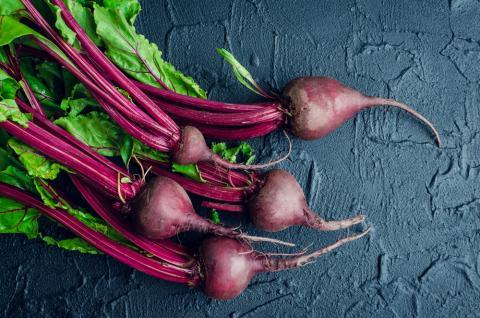
Did you know that iron deficiency anemia is the most common form of nutritional deficiency? Though it is most common among young children and pregnant women, men are also at moderate risk.
Iron deficiency anemia is caused when the balance of iron stores in the body are not sufficient to produce erythrocytes, which are essentially the red blood cells responsible for transporting oxygen—our energy source!—to and from our body’s tissues. An iron deficiency, therefore, affects the body’s overall energy and efficiency; proper iron levels in the body support a healthy pregnancy, improve overall energy, boost muscle and brain function, and can potentially cure restless leg syndrome. Iron keeps the body running smoothly!
Who Is At Risk Of Iron Deficiency Anemia?
One in five women of childbearing age have iron deficiency anemia, and nearly half of all pregnant women develop iron deficiency anemia. Mothers who do have iron deficiency anemia are more likely to have premature or low birth weight babies, making their babies at an even higher risk of iron deficiency anemia. As iron is essential for early growth and development, deficiency can be supplemented with fortified baby foods. (Of course, consult your personal doctor regarding your infant’s health and diet before using iron supplements, which may not be necessary.) Others at risk of iron deficiency anemia are teens who are underweight, those who are managing chronic illnesses, or women with very heavy periods. Those who give blood frequently or who have had kidney dialysis treatment or gastric bypass surgery are also at risk of developing iron deficiency anemia.
The following symptoms may be a cue that you are at risk of or experiencing iron deficiency anemia. Always consult your doctor first, though, for a professional opinion regarding your health and diet.
Symptoms Of Iron Deficiency Anemia
- lack of energy, weakness, fatigue
- dizziness
- pale skin
- shortness of breath
- irregular or fast heartbeat (possibly leading to future arrhythmias, heart murmurs, or heart failure)
- headaches
- poor concentration
- weakened immune system/frequent infections
- cold hands and feet
- brittle nails
- swelling in the tongue
- cracks in the side of the mouth
- tingling sensation in the legs
- leaky gut or irritable bowel syndrome (IBS)
In children, signs of iron deficiency anemia include:
- poor appetite
- slowed growth and development
- behavioral problems
Heme Iron vs. Nonheme Iron: What's The Difference?
There are two types of iron: heme and nonheme iron. Heme iron is derived from hemoglobin, a protein in red blood cells that is responsible for transporting oxygen to the body’s tissues, and is therefore naturally occurring in meat and fish products. Nonheme iron is derived from plants like legumes, nuts, spinach, rice, and other cereals, and/or added to iron-enriched and iron-fortified foods. Most dietary iron is the nonheme form of iron, which is also more difficult for the body to absorb. In order to encourage your body’s absorption of iron—both nonheme and heme—consider the following...
Help Your Body Absorb Iron
- Consume foods rich in nonheme iron with foods from the meat, fish, and poultry food groups (which contain heme iron)
- Avoid drinking coffee, drinking tea, and consuming calcium-rich foods with iron-rich foods.
- Avoid a high-fiber diet, as large amounts of fiber inhibit efficient iron absorption.
- Pair iron-rich foods with others rich in vitamin C, like strawberries, broccoli, and citrus fruits.
Food Sources Of Iron
Add iron to your daily diet! The recommended dietary allowance for iron is eight milligrams for older men and women, and more than double that at 18 milligrams RDA for premenopausal women. Most iron-rich foods also contain many other essential trace minerals present in every cell of the body, like magnesium, calcium, and potassium. Read more about the iron content of each of these iron-rich foods in this list.
Sources Of Heme Iron:
- liver, especially beef or chicken
- grass-fed beef, red meat, pork, poultry
- seafood, like sardines, clams, mollusks, oysters, and mussels
Sources Of Nonheme Iron:
- spirulina—one ounce contains 8 mg of iron, which is 44% of the recommended daily value! Consuming spirulina is the most efficient way for vegetarians to get a strong dose of iron.
- dark green leafy vegetables, like spinach, chard, beet greens, collard greens, etc.
- legumes, like black beans, lentils, chickpeas, kidney beans, split peas, or lima beans
- nuts and seeds like pistachios, almonds, cashews, peanuts, pecans, and pumpkin, sesame, and sunflower seeds
- dried fruit like apricots, raisins, figs, and prunes
- baked potatoes
- tofu
- pasta
- brown rice
As with most trace minerals, it is possible to “overdose” on iron if you are unnecessarily using an iron supplement. Although iron toxicity is rare, it can occur when iron stores in the body such as the liver, spleen, and bone marrow are saturated and iron accumulates in organs and body tissues. Again, take supplements only as prescribed by a doctor, as iron supplements can also have side effects including stomach irritation, dark stools, heartburn, and sometimes constipation.
Iron deficiency can have serious health implications, but fortunately, it is very curable! Consuming foods rich in easily absorbed, heme iron (meats, fish, and poultry) is the most natural way to ensure that you are getting iron in your diet. Vegetarian? Go for a nonheme iron rich lentil-spinach-sweet potato medley, pairing it with vitamin-C rich strawberries on the side, and you’ve got an energy-boosting, brain-bursting, heart-happy meal!








